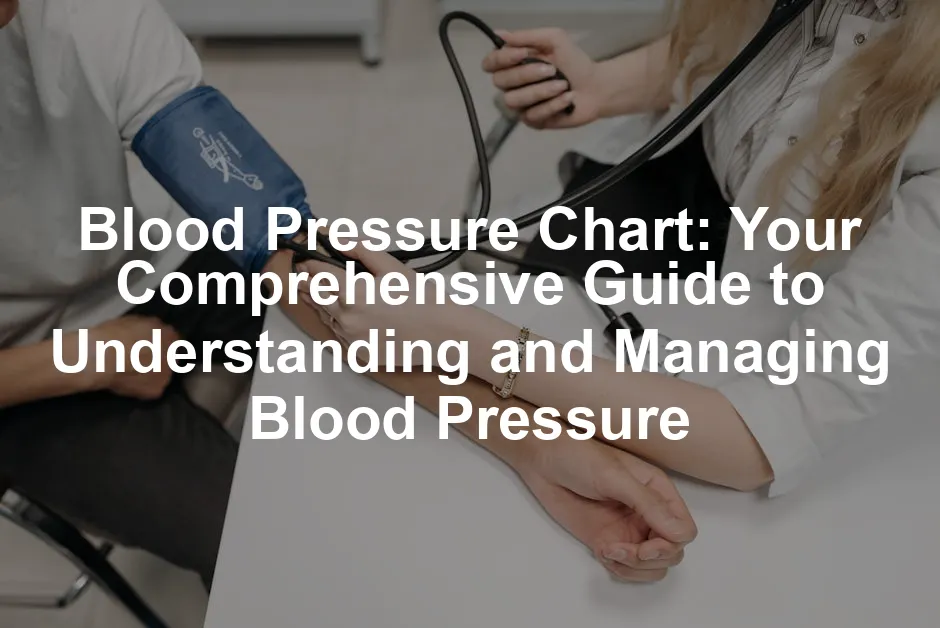Introduction
In a world where stress levels are high and fast food is the norm, blood pressure has become the silent villain in our health saga. It’s like that sneaky character in a thriller movie—you know it’s there, but you can’t always see its effects until it’s too late. Understanding blood pressure, particularly through a blood pressure chart poster, is essential for everyone, whether you’re a health nut or someone who thinks “exercise” is an app on your phone.
Understanding blood pressure is crucial for managing health effectively. blood pressure chart provides a visual representation of what those numbers mean.
Blood pressure is a vital sign that reflects the force of blood against artery walls. If you’re feeling like a detective trying to unravel the mystery of your health, fear not! This guide will help you decipher those perplexing numbers. The first number, systolic, measures pressure when your heart beats. The second number, diastolic, gauges pressure when your heart rests. Together, they tell a story about your cardiovascular health.
Now, let’s be honest—most of us would rather binge-watch our favorite show than read a medical manual. But understanding your blood pressure can prevent a lot of drama down the road. With heart disease on the rise, keeping a close eye on those readings can be the plot twist that saves your life.
In this guide, we’ll break down what those numbers mean, how to monitor them, and what steps you can take to achieve your healthiest self. So, grab some popcorn (or healthy snacks) and get ready for an eye-opening adventure into the world of blood pressure!
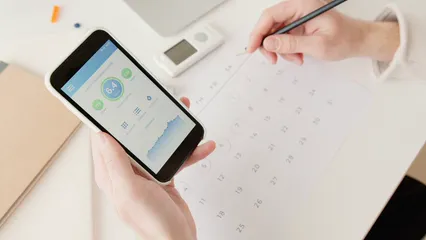
Summary of Key Points
Understanding blood pressure is crucial. It’s measured in millimeters of mercury (mm Hg) and consists of two numbers: systolic (top) and diastolic (bottom). Each reading provides vital information about heart health.
The American Heart Association has categorized blood pressure ranges, highlighting normal, elevated, and hypertensive levels. Knowing where you fall on this chart is essential for taking appropriate action. For instance, normal blood pressure is below 120/80 mm Hg, while stage 1 hypertension starts at 130/80 mm Hg.
Age and gender also influence blood pressure norms. As we age, our bodies undergo various changes, which can affect our readings. That’s why tailored health assessments are necessary. Plus, home monitoring of blood pressure has become standard, making it easier to track your health. You can start your journey with a reliable device like the Omron Platinum Blood Pressure Monitor.
Lifestyle factors play a significant role too. A diet high in salt can elevate blood pressure, while regular exercise can help lower it. Stress management techniques, such as meditation or yoga, can also contribute to maintaining healthy levels. Speaking of yoga, a good yoga mat can make your practice even more enjoyable and effective!
Recognizing symptoms of high blood pressure is essential. Often called the “silent killer,” hypertension can go unnoticed. If you experience headaches, chest pain, or vision changes, consult your healthcare provider.
Finally, there are many resources available for managing blood pressure. From monitoring kits to dietary recommendations, tools exist to help you on your journey. Remember, knowledge is power! The more you know, the better equipped you’ll be to tackle this health challenge head-on.
With all this in mind, let’s dive deeper into understanding blood pressure and how to manage it effectively!

Understanding Blood Pressure
What is Blood Pressure?
Blood pressure is the force of blood pushing against artery walls. It’s vital for delivering oxygen and nutrients throughout your body. Think of it as your body’s internal delivery service—without it, everything would come to a screeching halt.
Blood pressure is measured in millimeters of mercury (mm Hg) and consists of two numbers. The first number is called systolic pressure, which measures the pressure when your heart beats. The second number is diastolic pressure, indicating the pressure when your heart rests between beats. This relationship is crucial; both numbers work together to provide a complete picture of your heart’s health.
Monitoring blood pressure is essential. Abnormal levels can lead to serious health problems, including heart disease, stroke, and kidney damage. Regular checks help you catch potential issues before they escalate. You might find it helpful to use a Welch Allyn Home Blood Pressure Monitor for accurate readings at home.
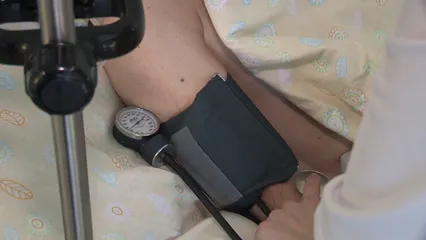
Blood Pressure Readings
Blood pressure readings follow a specific format: systolic over diastolic (e.g., 120/80 mm Hg). Let’s break it down:
- Systolic Pressure: This is the top number. It shows how much pressure your blood is exerting against artery walls when your heart beats. Higher systolic readings often indicate a greater risk for heart-related conditions.
- Diastolic Pressure: This is the bottom number. It measures the pressure in your arteries when your heart is resting between beats. Elevated diastolic levels can also signal potential health problems.
Understanding these readings helps you recognize where you stand in terms of blood pressure health.
Categories of Blood Pressure
The American Heart Association (AHA) defines several categories of blood pressure, helping you identify where your readings fall. Here’s the breakdown:
- Normal: Less than 120/80 mm Hg
- Elevated: Systolic 120-129 and diastolic less than 80
- Stage 1 Hypertension: Systolic 130-139 or diastolic 80-89
- Stage 2 Hypertension: Systolic 140 or higher or diastolic 90 or higher
- Hypertensive Crisis: Higher than 180/120 mm Hg (Seek immediate medical help!)
These categories show the importance of regular monitoring. Even minor fluctuations can have significant implications for your health.
To visualize these categories, here’s a simple table:
| Category | Systolic (mm Hg) | Diastolic (mm Hg) |
|---|---|---|
| Normal | Less than 120 | Less than 80 |
| Elevated | 120-129 | Less than 80 |
| Stage 1 Hypertension | 130-139 | 80-89 |
| Stage 2 Hypertension | 140 or higher | 90 or higher |
| Hypertensive Crisis | Higher than 180 | Higher than 120 |
Understanding these categories allows you to take proactive steps toward better heart health. If your readings fall into the elevated or hypertensive categories, consult with a healthcare professional to discuss potential lifestyle changes or treatments. Remember, knowledge is power! By keeping an eye on your blood pressure, you can steer your health in the right direction.

Managing Blood Pressure
Home Monitoring
Regularly checking your blood pressure is like keeping an eye on your favorite soap opera—it’s all about staying tuned in to the drama! Home monitoring empowers you to track your numbers, ensuring you catch any plot twists before they escalate into major health issues.
To effectively measure your blood pressure at home, follow these simple yet effective tips:
- Choose the Right Monitor: Opt for an automatic upper arm monitor. Wrist or finger monitors can be less accurate.
- Timing is Everything: Measure your blood pressure at the same time each day. Mornings or evenings work best. Avoid caffeine and alcohol for at least 30 minutes prior.
- Get Comfortable: Sit in a quiet space with your back supported. Keep your feet flat on the floor and your arm at heart level. Relax for five minutes before taking your reading.
- Dress for Success: Wear short sleeves or roll up your sleeve to avoid constricting the blood flow. The cuff should fit snugly around your bare arm.
- Be Consistent: Take two or three readings, one minute apart, and record the results. If there’s a significant discrepancy, take more readings to determine your average.
By following these guidelines, you’ll become a pro at home monitoring, giving you peace of mind and valuable data to share with your healthcare provider. If you’re looking for a comprehensive tool to assist you, consider a fitness tracker to help monitor your activity levels as well!

Lifestyle Changes for Healthy Blood Pressure
Let’s face it: we all love indulging in our favorite snacks and skipping workouts, but those habits can be the villains in your blood pressure story. Fortunately, making some lifestyle changes can help transform you into the hero of your health tale!
- Adopt the DASH Diet: The Dietary Approaches to Stop Hypertension (DASH) diet is a game changer. Focus on fruits, vegetables, whole grains, and lean proteins. Aim for potassium-rich foods like bananas, spinach, and sweet potatoes. They help balance out sodium and lower blood pressure. For delicious recipes, grab a DASH Diet Cookbook!
- Cut the Salt: Too much sodium can raise blood pressure. Limit your intake to 1,500 mg per day. Say goodbye to processed foods and read labels. Your taste buds may protest, but your heart will thank you!
- Get Moving: Aim for at least 150 minutes of moderate exercise per week. Activities like brisk walking, swimming, or biking can keep your heart strong. Plus, they’re great for stress relief! Resistance training with resistance bands can also be a fun way to strengthen your body.
- Manage Stress: Chronic stress can elevate blood pressure. Try mindfulness techniques like meditation, yoga, or deep-breathing exercises. Even a good laugh with friends can lower those numbers! Consider investing in a meditation cushion for added comfort during your practice.
- Limit Alcohol and Caffeine: Too much alcohol can lead to hypertension. Stick to no more than one drink per day for women and two for men. And while caffeine might give you a boost, monitor your intake, as it can spike blood pressure.
- Quit Smoking: If you smoke, now’s the time to kick the habit. Smoking increases blood pressure and damages blood vessels. Seek support programs to help you quit.
These lifestyle tweaks aren’t just about numbers; they’re about embracing a healthier, happier life. So roll up those sleeves, put on your superhero cape, and take charge of your blood pressure!

Medical Interventions
Sometimes, lifestyle changes aren’t enough, and medications step onto the stage like the trusty sidekick. If your blood pressure remains high despite your best efforts, it might be time to discuss treatment options with your healthcare provider.
Common medications for hypertension include:
- Diuretics: Often called “water pills,” they help your body eliminate excess sodium and fluid. This can reduce blood volume and lower pressure.
- ACE Inhibitors: These medications relax blood vessels by preventing the formation of a hormone that narrows them. They’re great for people with heart failure or diabetes.
- Calcium Channel Blockers: They prevent calcium from entering muscle cells in the heart and blood vessels, leading to relaxation and lowering of blood pressure.
- Beta-Blockers: These reduce the workload on your heart and help it beat more slowly. They can be particularly useful if you have heart disease or previous heart attacks.
- Angiotensin II Receptor Blockers (ARBs): Similar to ACE inhibitors, ARBs block the effects of a hormone that constricts blood vessels.
Each medication comes with potential side effects, so discussing your options with a healthcare professional is essential. They can help you navigate any challenges and find the best fit for your health journey.
In the battle against high blood pressure, knowledge and action are your most powerful allies. Whether through lifestyle changes or medications, taking charge of your health will yield dividends for years to come.
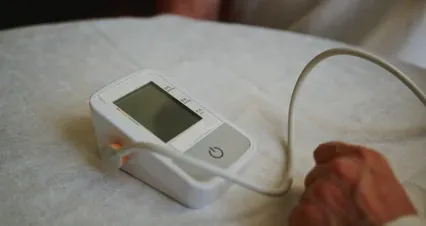
The Importance of Regular Check-ups
Regular check-ups with your healthcare provider are vital for blood pressure management. Think of them as your health pit stops—necessary to refuel and recalibrate your journey toward wellness.
So, how often should you get your blood pressure checked? It depends on your individual risk factors:
- Healthy Adults: If you’re under 40 and have normal blood pressure, aim for a check-up every two years.
- Adults Aged 40 and Over: Get your blood pressure checked annually, especially if you’re at risk for hypertension.
- Individuals with Risk Factors: If you have a family history of high blood pressure, are overweight, or have other conditions like diabetes, check with your healthcare provider about more frequent monitoring.
Early detection can prevent complications and lead to better outcomes. So don’t skip those appointments; they can be the difference between a healthy heart and a ticking time bomb!

Conclusion
Understanding blood pressure can feel like trying to decode a secret language, but it doesn’t have to be a daunting task! This guide has armed you with essential knowledge to transform those confusing numbers into a clear path toward better health. Think of blood pressure readings as a GPS for your cardiovascular well-being—they can guide you toward a healthier lifestyle.
The heart is the ultimate multitasker, pumping blood and nourishing every cell in your body. Keeping your blood pressure in check isn’t merely about avoiding the dreaded hypertension label; it’s about embracing habits that foster heart health for the long haul. Just like a car requires regular maintenance, your body needs consistent care to keep everything running smoothly.
So, what’s the takeaway? Monitor your blood pressure regularly and know your numbers! If they start veering into the elevated or hypertensive zones, take action. Consult healthcare professionals who can provide personalized advice tailored to your unique health profile. They’re your allies in this journey, ready to help you navigate through the options available.
Making lifestyle changes can be both rewarding and fun. Swap that soda for water, take a brisk walk instead of scrolling through social media, and treat your heart to a delicious, nutrient-rich meal. Speaking of meals, meal prep containers can help you stay organized and make healthy eating a breeze! Check out these meal prep containers to simplify your healthy eating journey.
At the end of the day, it’s all about balance. By understanding your blood pressure and taking proactive steps, you’re not just managing numbers; you’re investing in a future filled with vitality and energy. Your heart deserves the best, so give it the love and care it needs!
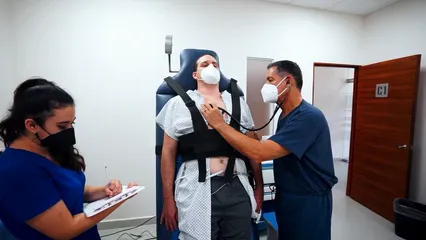
FAQs
What is considered high blood pressure?
High blood pressure, or hypertension, is defined as a sustained blood pressure reading of 130/80 mm Hg or higher, according to the latest guidelines from the American Heart Association. Here’s how the categories break down: Normal: Less than 120/80 mm HgElevated: Systolic 120-129 and diastolic less than 80Stage 1 Hypertension: Systolic 130-139 or diastolic 80-89Stage 2 Hypertension: Systolic 140 or higher or diastolic 90 or higherHypertensive Crisis: Higher than 180/120 mm Hg (Seek immediate medical attention!) Recognizing these numbers is essential for taking action.
How often should I check my blood pressure?
The frequency of blood pressure checks varies based on individual health factors: Healthy Adults: If your readings are normal, get checked every two years.Adults Aged 40 and Over: Aim for an annual check-up, especially if there are risk factors like a family history of hypertension or lifestyle issues.Individuals with Elevated Readings or Hypertension: Monitor your blood pressure every 3-6 months, or as advised by your healthcare provider. Keeping tabs on your blood pressure can be lifesaving, so take it seriously!
Can stress affect blood pressure?
Absolutely! Stress can lead to temporary spikes in blood pressure. Chronic stress may contribute to ongoing hypertension, so finding healthy coping strategies is key. Techniques like mindfulness, deep breathing, and even a good laugh can help keep stress levels in check.
What should I do if I have high blood pressure?
First, don’t panic! Start by consulting with a healthcare professional for personalized advice. They may recommend lifestyle changes like diet and exercise or, in some cases, medication. Taking control of your health is the first step toward a brighter future!
What foods can help lower blood pressure?
Incorporate potassium-rich foods like bananas, spinach, and sweet potatoes into your diet. The DASH diet, focusing on fruits, vegetables, whole grains, and lean proteins, is particularly effective at promoting heart health. And remember, cutting down on salt is crucial—your heart will thank you!
Can Stress Affect Blood Pressure?
Stress and blood pressure? Yep, they’re like peanut butter and jelly—inseparable! When life throws curveballs, your body reacts. That reaction can raise your blood pressure. It’s like your heart is saying, “Hey, I’m working overtime here!” Stress triggers the release of hormones like adrenaline and cortisol. These hormones make your heart race and blood vessels constrict. In the short term, stress can lead to spikes in blood pressure. But chronic stress? That’s where things get tricky. Over time, your blood pressure might stay elevated. This can lead to health risks, including hypertension. Managing stress is crucial. Techniques like deep breathing, exercise, and even a good laugh can help keep those numbers in check.
What Should I Do If I Have High Blood Pressure?
If you’ve found yourself in the high blood pressure club, don’t fret! There are steps you can take. First, consult your healthcare provider for personalized advice. They’re your best resource for tackling this issue. For immediate action, consider these strategies: Monitor Regularly: Keep track of your readings at home. This data can help your doctor tailor a plan that suits your needs.Lifestyle Tweaks: Start with small changes. Aim for a balanced diet, low in salt and rich in fruits and vegetables. The DASH diet is a great choice!Get Moving: Regular physical activity can significantly lower blood pressure. Just 30 minutes a day can make a difference.Manage Stress: Incorporate stress-relief activities into your routine. Whether it’s yoga, meditation, or simply taking a walk, find what works for you. For long-term strategies, focus on: Weight Management: Losing even a few pounds can help lower your blood pressure.Limit Alcohol and Caffeine: Both can contribute to higher blood pressure. Moderation is key!Quit Smoking: If you smoke, now’s the time to kick the habit. It can lead to a healthier heart and lower blood pressure.Medication: If lifestyle changes aren’t enough, your doctor may prescribe medications to help manage your blood pressure effectively.
What Foods Can Help Lower Blood Pressure?
When it comes to lowering blood pressure, your plate can be your best friend. Here are some foods that can help keep those numbers in check: Fruits: Bananas, berries, and oranges are potassium-rich and can help balance sodium levels.Vegetables: Leafy greens like spinach and kale are fantastic for lowering blood pressure. They’re full of potassium and other essential nutrients.Whole Grains: Oatmeal, brown rice, and whole wheat bread can boost your fiber intake and help with blood pressure.Fatty Fish: Salmon, mackerel, and sardines are rich in omega-3 fatty acids, which can help lower blood pressure and improve heart health.Nuts and Seeds: Almonds, walnuts, and flaxseeds are great snacks that can benefit your heart and lower blood pressure.Beans: Lentils, chickpeas, and black beans are high in fiber and protein, making them a healthy addition to any meal.Dark Chocolate: Yes, you read that right! Dark chocolate (in moderation) can help lower blood pressure due to its flavonoids. Opting for a diet rich in these foods, while reducing processed foods and sodium, can be a game changer for your blood pressure. Remember, every little change counts! Your heart will thank you.
Please let us know what you think about our content by leaving a comment down below!
Thank you for reading till here 🙂
All images from Pexels

